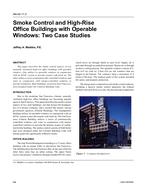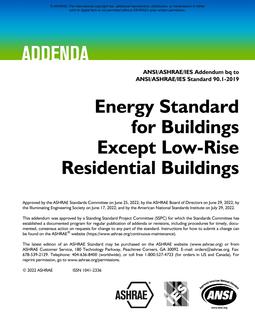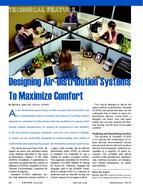Temperatures of the Arab Gulf region harsh climate exceed 50°C during the summer, making cooling a challenge. This paper investigates the effect of wind on the thermal performance of an outdoor air-conditioned walking and setting area. Two methods of delivering conditioned air using displacement diffusers and jet diffusers are assessed. Several wind mitigation methods are tested such as trees and glass barrier. K-ε three dimensional Computational Fluid Dynamics (CFD) model is built to simulate the airflow and temperature patterns between the buildings. Mass and energy conservation equations are adapted within the model. In order to validate the numerical model, wind-tunnel results are compared with the simulated airflow patterns. Qualitative comparisons between airflow simulations and wind-tunnel results yielded good agreement. The results show that the air distribution system could maintain an acceptable thermal comfort within the walkway up to wind speeds of 5 m/s (11.2 mph). Wind blowing from the west direction showed the maximum penetration into the walkway up to 45 m (147.6 ft) measured from the entrance. Supplying conditioned air from floor displacement diffusers inclined at 60° to the horizontal shows better thermal performance with wind blowing at 5 m/s (11.2 mph) from North West direction. Adapting wind mitigation methods decreased the hot air penetration into the walkway, and decreased the average temperature by 3°C (5.4 °F).
Citation: 2017 Annual Conference, Long Beach, CA, Conference Papers
Product Details
- Published:
- 2017
- Number of Pages:
- 8
- Units of Measure:
- Dual
- File Size:
- 1 file , 2.2 MB
- Product Code(s):
- D-LB-17-C003


